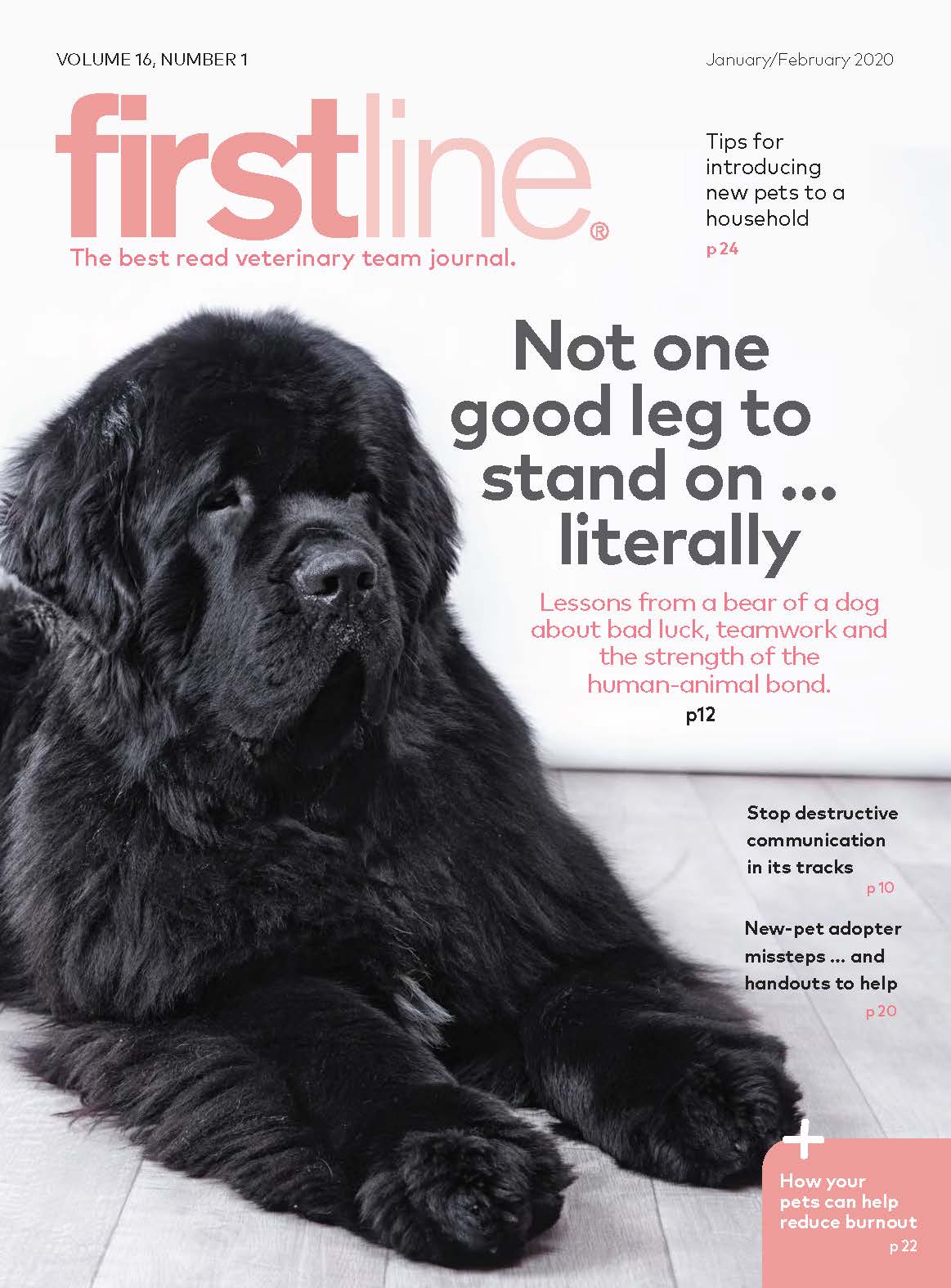Tips for introducing new pets to a household
A pets sudden introduction to a household with other animals or kids can be rough on veterinary clients. Do you need to brush up on your advice for introducing new cats and dogs? These are some basic steps and thoughts that will help any new owner of a puppy, kitten or other new pet.
chendongshan / stock.adobe.com

One of the most common mistakes pet owners make when they welcome home a new dog or cat is to take the sink-or-swim approach-introducing the pet to everything and everyone at the same time without giving anyone time to acclimate. Fast introductions can set the stage for conflict and fear-filled relationships. Here are some guidelines for a better approach: slow and gradual.
Dogs meeting dogs. Dogs should meet for the first time on neutral territory and take introductions slowly, starting at a distance and doing mutually enjoyable activities like parallel walking at a distance, gradually coming closer. The pet owner should monitor the dogs for signs of relaxation and friendly body language before bringing them together.
Cats meeting dogs. We want to prevent a chase sequence from ever starting. If it does-and the dog learns that chasing the cat is fun, and the cat learns that the dog is terrifying-that's a hard cycle to undo. The cat should feel safe and be in a high location out of reach of the dog-like a spot near or on a cat tree. The pet owner should keep the dog on leash or behind a barrier, like a gate, and encourage investigation by the cat at a comfortable distance while rewarding the dog for remaining calm. Over time, cats and dogs can be brought closer together, but continued supervision is of paramount importance to be able to redirect or calmly interrupt and reengage the dog with something else if a situation gets dicey. Avoid letting the cat get cornered while the dog approaches or the cat darting off after being startled and the dog perking up ready to race after the cat.
Free client handouts
Need puppy and kitten handouts? Visit dvm360.com/puppykittenhandouts. Want to see all of dvm360.com's client handouts? Head to dvm360.com/clienthandouts.
Cats meeting cats. Cats need time to get to know one another. Just like we have personal items we don't want to share, cats feel the same way. A pet owner should ensure that each cat has plentiful resources all its own-litterbox, feeding station, and climbing, perching and bedding areas.
Pets meeting kids. Children should be supervised and guided on how to interact with pets. This is important to make sure that the child is safe and that the pet interacts appropriately. It's important to ensure that a pet stays comfortable and calm with a child and isn't unintentionally overwhelmed or threatened by poking or prodding hands or hugs and kisses (this goes for grownups as well!).
What about the home? Pet owners shouldn't assume an animal will know what to do and where to go in a new place. Limiting access to certain areas of the house and offering plentiful outlets for behavior, such as toys, chews and scratching posts. One or mroe litterboxes and frequent potty opportunities are also key. This reduces the risk of accidents until a new pet figures out the appropriate areas to eliminate (I always remind pet owners to reward for proper use of bathroom areas and not punish for misuse-punishment just heightens anxiety and confusion.)
As the dog learns to put teeth on chews and toys, not furniture, or the cat learns to put claws on scratching posts, not the couch or blinds, the pet can be integrated more fully and given greater access a little at a time. The same goes for housetraining: Start off small and when the animal can handle the space and feels comfortable with its new routine and layout, open up new areas of the home a little at a time.
Mikkel Becker is the lead animal trainer for Fear Free Pets and a certified behavior consultant and trainer who specializes in reward-based training that's partnered closely with the pet's veterinary team. Mikkel is the co-author of six books, including From Fearful to Fear Free.
